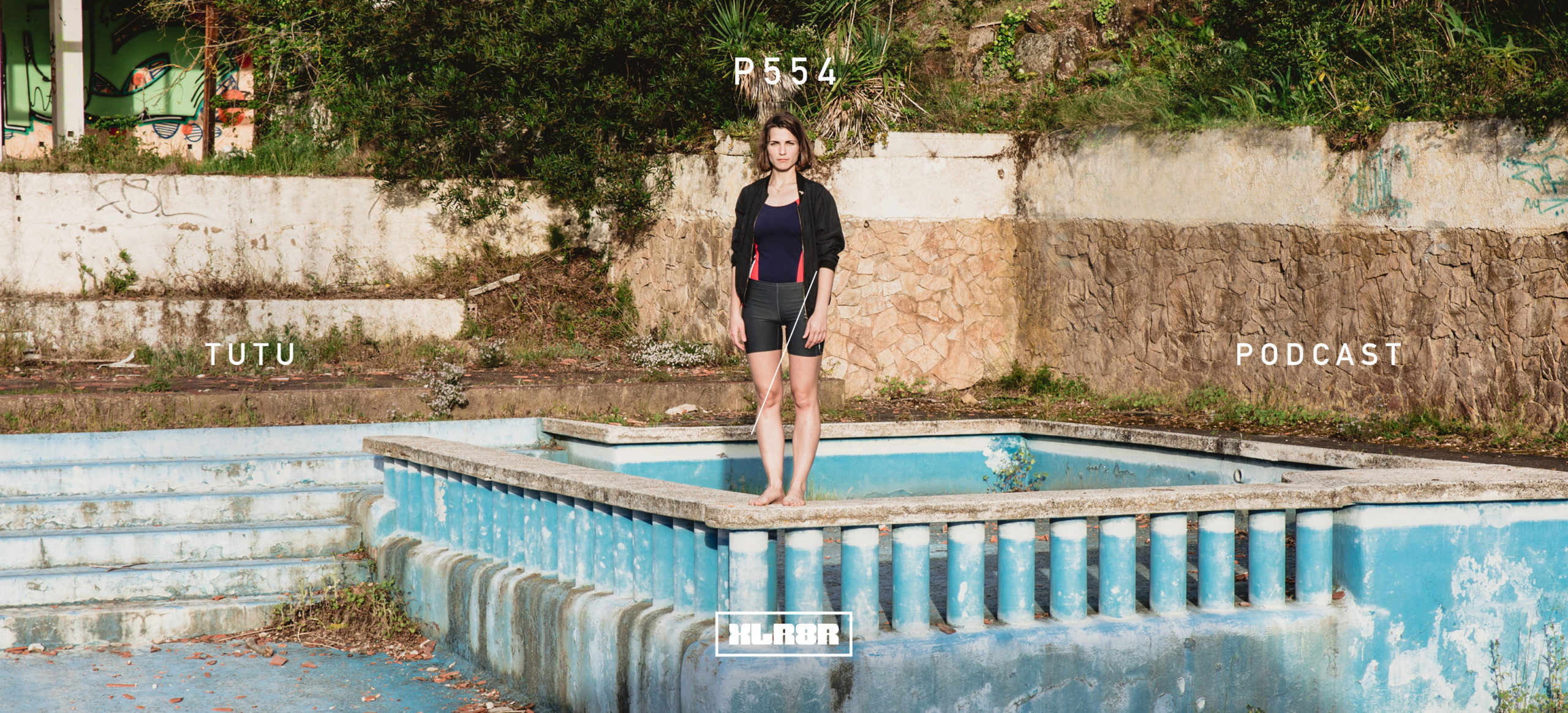Podcast 554: Tutu
Warped out weirdness from a rising Spanish artist.

Podcast 554: Tutu
Warped out weirdness from a rising Spanish artist.
Those who attended Barcelona’s Primavera Sound festival will perhaps be familiar with Tutu, the alias of Gemma Planell. The rising Spanish artist performed one of the standout sets of a four-day event blessed with some of electronic music’s most established and forward-thinking names—churning out “dancefloor jams, with a stunning set of experimental rave, techno, bass, and grime, all meticulously mixed,” writes Daniel Cole in his review. “The DJ’s three-CDJ set managed to mix up beatless post-rave sounds with daring Autechre-like techno, off-beat kicks, along with contemporary grime. The dedication to craft, diversity in styles, and playful mixing techniques left the crowd in a space between awe and foot-tapping grooves.” He described it as one of the best mixes he’s heard all year.
Planell has been performing under the Tutu pseudonym for a number of years. She opts to stay out of the spotlight by shying away from media attention; interest in her is founded upon a handful of online mixes and her club or festival performances—the rest is just word of mouth.
Her sets are intense and adrenaline-filled with a sound that’s hard to classify; you’re like to hear bass house, cosmic trance, abstract grime, schizophrenic tribalism, acid techno, and just about everything else. The singular common denominator is that they evidence the exquisite musical taste and personality of the orchestrator behind them. “My sets usually do the talking for me,” Planell says. At this point, there isn’t too much more to be said. You can download Planell’s Primavera Sound set in full via the WeTransfer button below.
Very little is known about you. What’s your backstory?
I prefer to remain away from the spotlight. My sets usually do the talking for me.
Talk to me about your entry into DJing. How did you get here?
It was 13 years ago, my partner in crime at that time was a DJ, so I naturally got into this whole thing. From there on I followed my own path and my sets evolved in a very organic way, inspired by friends and colleagues in Barcelona and abroad.
How long have you been performing as Tutu—and when did the project originate?
Ever since I started DJing, but it really took off about two years ago.
How did you learn to DJ?
As I mentioned before, it was all through Mario G. Quelart, my partner at the time. He showed me the technical side of it, then, later on, I started to apply my own ideas, partly borrowed from my other passion, photography. It’s been quite a long journey and my sound and approach have definitely evolved a lot.
Do you produce too?
Yes, for some time now. My production helps me to get deeper into my idea of storytelling; I use all sorts of intimate sounds to explore my idea of energy on the dance floor. At first, I used to craft my own sound pieces as collages within my DJ sets, but now I mostly consider them independent tracks.
Where and how do you dig for your music?
I get new stuff through friends, Twitter, labels I love, and by checking out sets from my favourite DJs. As for my own sounds and field recordings, I record them while hiking, running, and standing still in lost spots, rare places, exploring new sites and feelings, listening and observing others around me, being in different situations and landscapes filled with energy.
What do you look for in a record?
I look for a meaningful experience, and it needs to make me move.
Do you remember your set at PS 2018 being particularly memorable?
Yes, it was absolutely memorable for me.
What made it better than your other sets?
I felt full of energy after a long winter, and having the chance to share it with the crowd around me was a total blast. I could feel the energy from the audience coming back to me—that’s why the set is titled KABOOM!
Can you name some of the key tracks in the set?
Yes, all of them are important tracks to me but this is a selection:
EVOL “Ten Canisters Of Pressurized Tetrafluoroethane Over Three Weeks (B)”
Christian Di Vito “Submerged Wind”
Jesse Osborne-Lanthier “Mi©rochipped”
Pan Daijing “Plate Of Order”
Sound Pellegrino Thermal Team “Activate” (A Capella Version)
Amnesia Scanner “AS Brieth” (feat. Colin Self)
Dale Cornish “Clap, Isolate”
Oswald Berthold, Chris Brown, Anders Dahl, Joe Gilmore, Fredrik Olofsson, Tim Perkis, Roc Jiménez de Cisneros, Peter Worth “Rara Avis (A)”
What’s the benefit of using three channels? Do you always use this setup?
It gives me the freedom I need to express myself. I tried other setups before so I could introduce additional sounds in my sets, but I needed better control so I decided to include the third CDJ last year. I’m more comfortable with my current setup and I also feel more creative freedom to add new dimensions to my sets. I’m always open to evolve, learn and grow, so let’s see what’s next : )
Due to temporary issues regarding the GDPR, EU readers can download the mix here.

